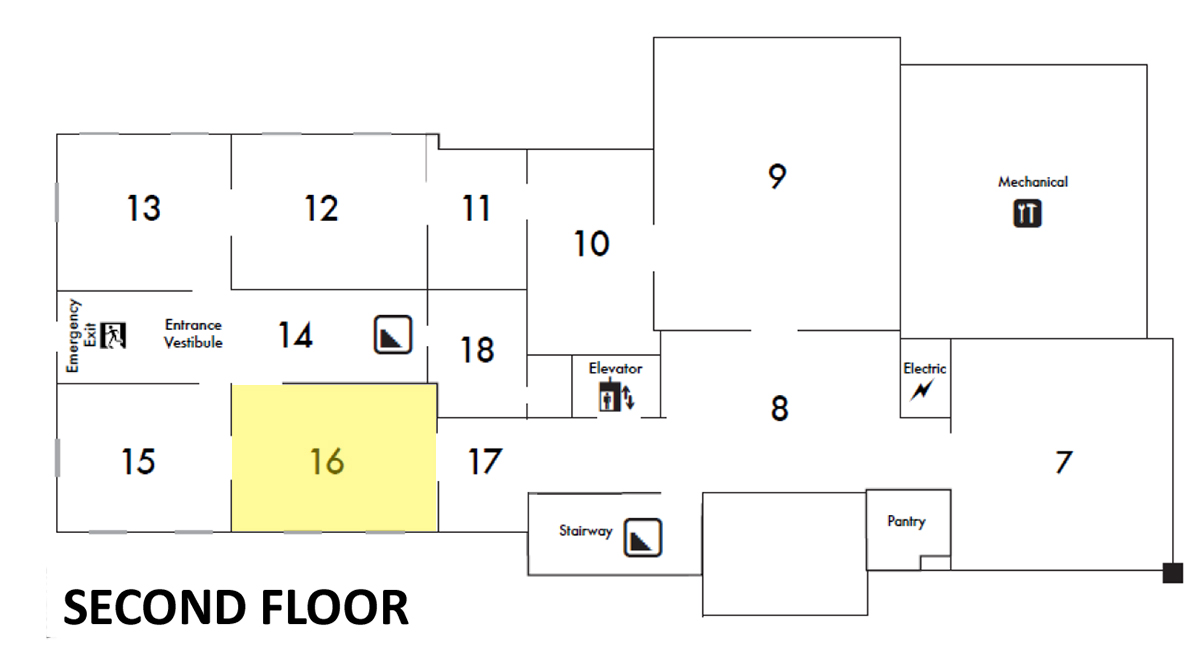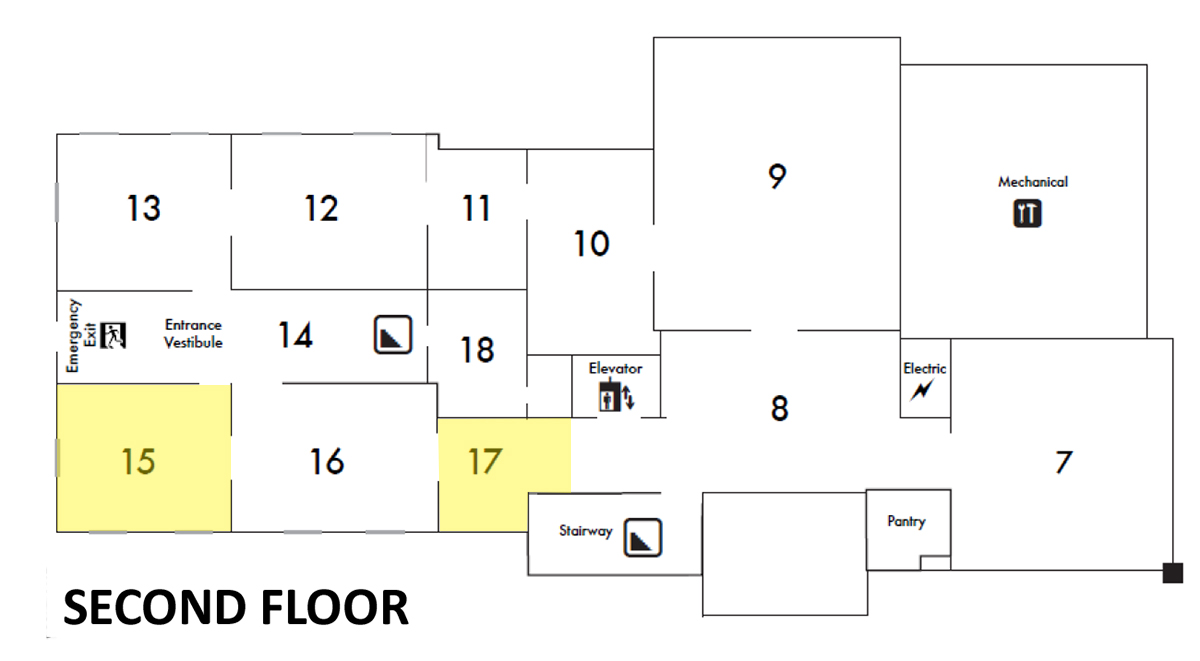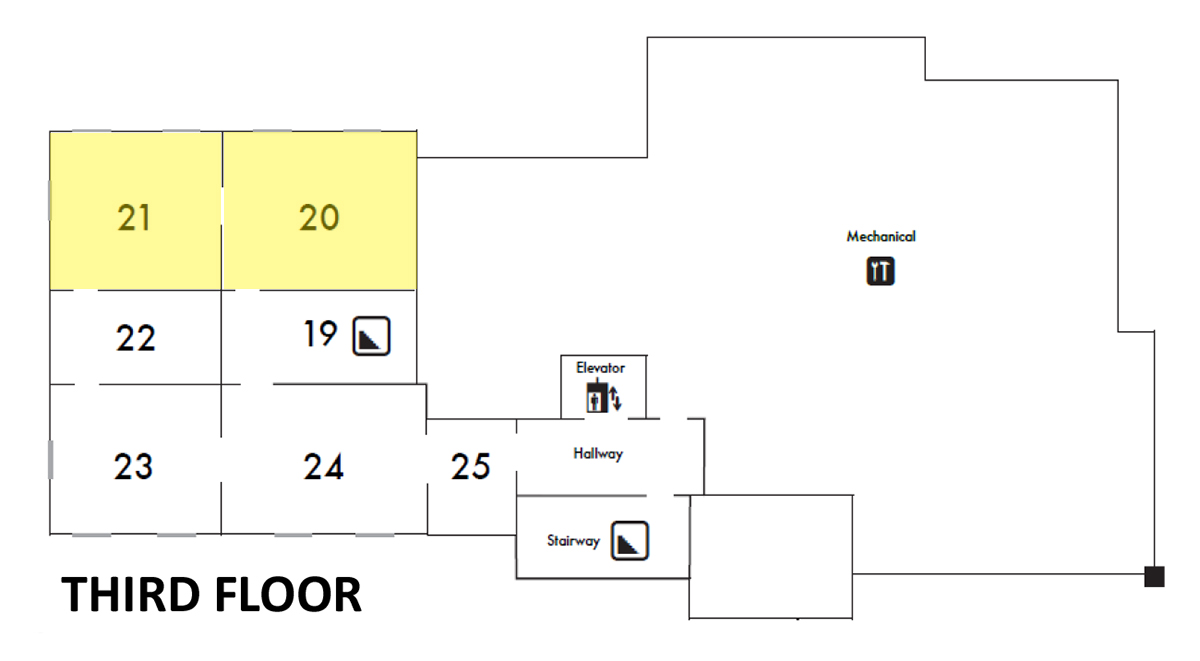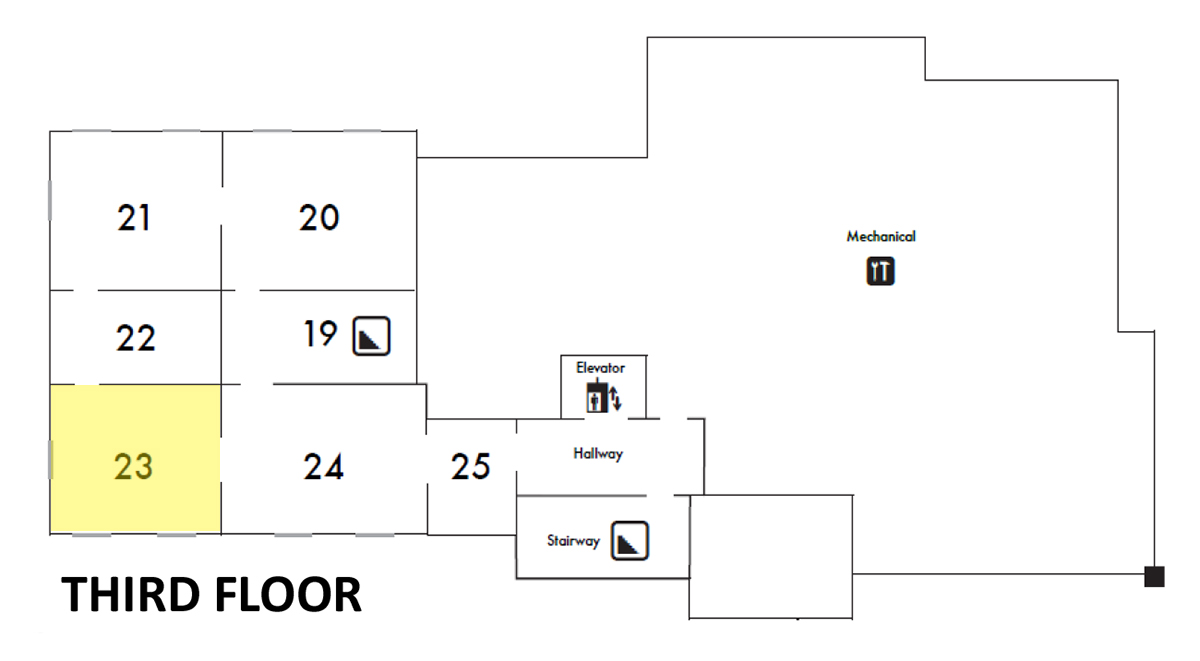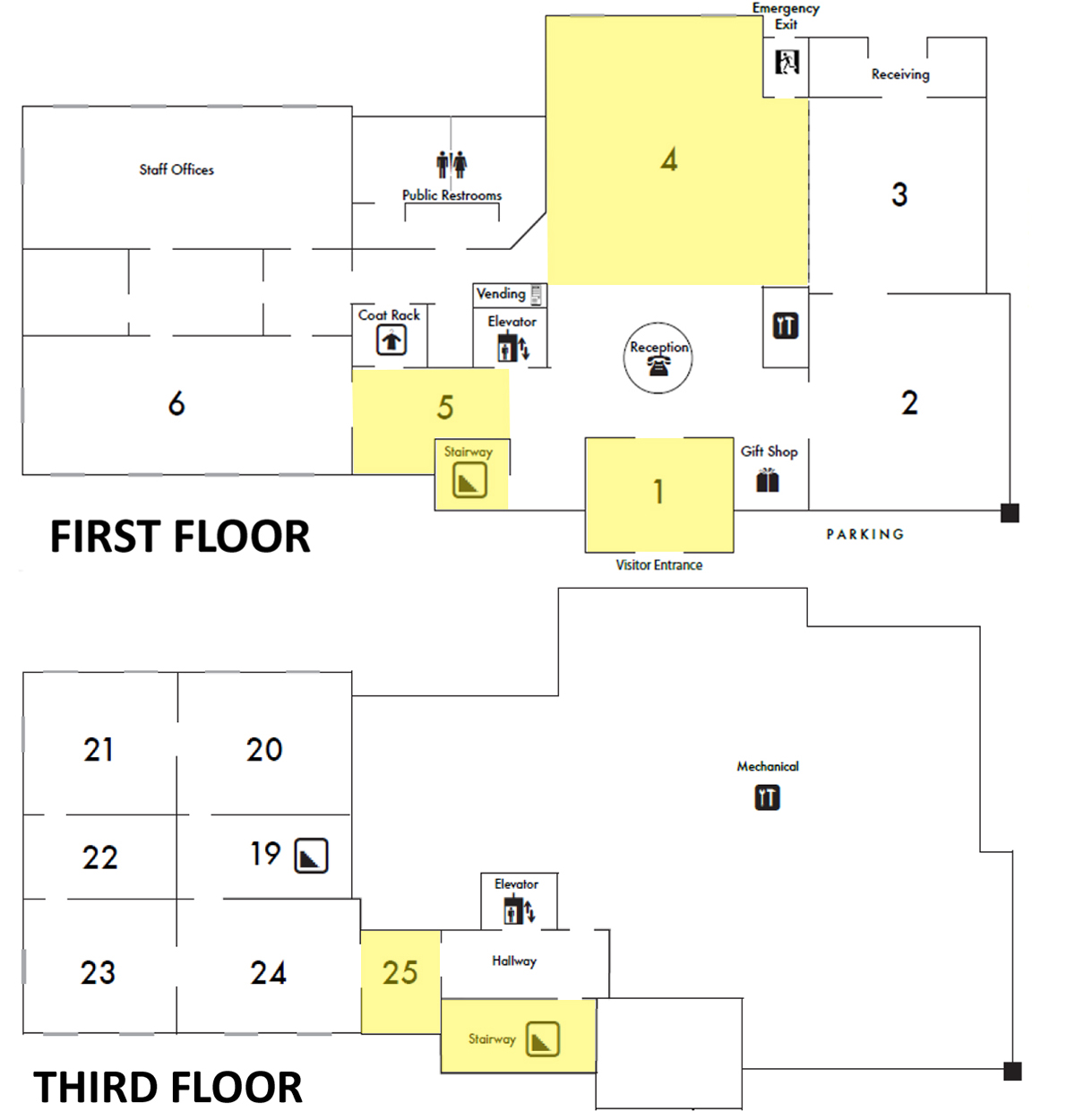Take A Stroll Through the Biggs!
Sewell C. Biggs (1914–2003), a University of Delaware graduate, world traveler and collector of fine and decorative art from the Delaware Valley, founded the Biggs Museum of American Art in 1993. He filled the museum with the pieces he had collected over the years, arranging this significant collection in a timeline that begins in 1700 and extends to the present. In this presentation, Biggs placed the fine and decorative arts of Delaware alongside national examples of American style.
We invite you to stroll through the Biggs Museum of American Art—as well as this online timeline—and in doing so, stroll through the history of the major periods in art in America. You will notice how some particularly popular styles often remained so to Delaware patrons long after nearby trendsetters moved on to the latest fashions. As a result, many style periods tend to overlap on the Biggs Museum timeline.
To learn more about Sewell C. Biggs, click here.
Early Baroque Period
(ca. 1680–1720s)
By the 1650s, Spain, England, Holland, Sweden and France had established thriving North American colonies from Canada in the north to Mexico and the Caribbean in the south. The first permanent Delaware colonies included Sweden’s Fort Christina in Wilmington (1638) and the Dutch’s Fort Casimir of New Castle (1651). In 1682, the Duke of York gave Delaware’s three counties to William Penn, founder of Pennsylvania, and the British began to arrive en masse. The American population leapt to nearly 1.5 million from 1700 to 1750, with various cultures moving to Delaware and the surrounding areas, thus pushing out the Lenape and Nanticoke Indians. The new settlers, which also included many Germans, brought possessions and traditions from their homelands, while they built and decorated their new homes like those they had left behind. African populations, forced to the New World through slavery, also grew within Delaware. However, all of these peoples also adapted to the New World. Soon these settlers’ homes included objects made by Delaware craftspeople and items that local merchants imported from larger cities in America or from Europe.
American Baroque Period
(ca. 1720–50s)
Queen Anne of Great Britain reigned from 1702 until her death in 1714, during which time she introduced Italian notions of design to the English court. British subjects in America adopted the style, know as both “Queen Anne” and “American Baroque.” Such fashionable American fine and decorative arts tied colonists to European notions of economic prosperity. The earliest known examples of furniture and silver made in Delaware date to this period and typify America’s early artistic reliance on England. Even as these British subjects in America followed London fashions, Great Britain limited its American colonies’ trade options and political power.
American Rococo Period
(ca. 1750s–85)
The Rococo style celebrated leisurely pursuits with organic decorative designs and symbols of sumptuous wealth, and was most popularly adapted to painting, interior design, and the decorative arts. English cabinetmaker Thomas Chippendale (ca. 1718–1779) was an advocate and had a revolutionary idea to advertise his business through catalogs showing his furniture designs. The Gentleman and Cabinet Maker’s Director (1754) quickly spread fashionable furniture designs throughout the Colonial-British world. At the same time, the lure of potential profits in fast-growing colonial cities attracted European immigrants trained in the Rococo styles of painting, metalsmithing, and woodworking. During the latter part of the 1700s, many Delaware craftspeople created and signed artworks that reflect strong Rococo influences. Many of these objects are similar in form to examples by Philadelphia makers.
Period Highlight:
The Janviers of Delaware
(1770–1820s)
The Janvier family of cabinetmakers descended from a French Huguenot immigrant joiner named Thomas Janvier (1664–ca. 1729), who historical records indicate settled in New Castle, Delaware, in the early 1700s. Very little recorded reference can be found on the Janvier family until Thomas’s grandson, John Janvier (1749–1801), began advertising his cabinetmaking business in Head of Elk (now Elkton), Maryland, around 1770. Soon after that, John Janvier moved his business to Cantwell’s Bridge, now Odessa, Delaware, where he made some of the region’s most fashionable Rococo and Federal furniture of the last quarter of the 1700s. John Janvier trained his sons, John Jr. (1777–1850) and Peregrine (1781–1865) in his profession, and may have also trained his nephew, Thomas Janvier (1772–1852). The Janvier family likely trained the next generation of Delaware’s finest cabinetmakers, including James McDowell (1785–1836), Daniel McDowell (who worked around 1793 to 1830), and John Macdonough, who was born in 1789.
American Federal Period
(ca. 1785–1815)
Between 1775 and 1787, the United States of America went through an unprecedented period of military and political turmoil, what with the Revolutionary War beginning in 1775, the signing of the Declaration of Independence taking place in 1776, and the ratification of the U.S. Constitution in 1787. Delaware was the first state to sign the U.S. Constitution that year, and the effects of war and the beginning of a new nation could be seen through the artwork produced during the period, with the fine and decorative arts of the emerging “First State” reflected the more sobering cultural tone of Federal America. The influential design book by British architects Robert and James Adam, Works in Architecture (1773), popularized a decorative arts aesthetic influenced by classical archeology. Meanwhile America was building a nation based on classical democracy. Portraiture of this period emphasized flattering likenesses, anatomical accuracy and formal poses.
Period Highlight: American Folk Art
(ca. 1790–1900)
As American folk art began to flourish in the 1790s, Delaware folk artists contributed heavily, creating a wide variety of artistic options, though they did not always respect internationally fashionable notions of beauty. While most portrait painters of this period trained with established “masters,” folk artists often began their careers painting signs and carriages. Many painters of the late 1700s moved from place to place in order to find work, so folk artists are particularly associated with traveling in rural communities. Folk painting frequently emphasizes decorative patterns, color, and material details—such as clothing and jewelry—at the expense of anatomical accuracy. Folk decorative art often favors bright colors, exaggerated proportions, elaborately painted surfaces, and the preservation of ethnic traditions.
American Empire Period
(ca. 1810–35)
During the War of 1812, America’s enemy, England, was also at war with Napoleonic France. America’s political sympathies with Napoleon fueled an interest in French fashion modeled on the archeology of Imperial Rome. Many Americans demonstrated their own political outlook by purchasing the highly decorative Napoleonic, or Empire, fashions from craftspeople in American cities, such as Philadelphia, Baltimore, and New York. Delaware craftspeople supplied very little of this cosmopolitan, deeply carved, erudite style. Instead, they perpetuated the simpler, more practical Federal style well into the 1800s. Meanwhile, the Empire effect on portraits during this time demonstrated a growing romanticism, marked by more-expressive brushstrokes, poses and colors.
Greek Revival Period
(ca. 1815–50)
Early America was interested in Greece, for two main reasons: the young country was fueled by a growing understanding of ancient democratic ideals, and additionally, in the 1820s, Greece was battling its own popular revolution for independence from the Ottoman Empire, which captured America’s sympathies and aesthetic appreciation. Some of the earliest American examples of the Greek Revival Style occurred in Philadelphia, Washington, D.C., and other cities where builders constructed schools, post offices, and government buildings that looked like ancient temples. In Delaware, the Greek Revival style was popularly applied to many houses and decorative arts, while nationally, the growing American market for fine art also embraced ancient Greek aesthetics, as demonstrated in figural sculpture and landscape painting.
Westward Expansion Period
(ca. 1840–60)
The country’s territorial acquisitions were of keen interest to those Americans crowded into the eastern states between 1783 and 1853. Therefore, the 1806 explorations of Meriwether Lewis and William Clark created tremendous national interest in these spacious, western American territories. Lewis and Clark’s descriptions of an untamed and largely unsettled American wilderness became a popular source of artistic expression throughout the western world. Ironically, the artistic themes celebrating westward expansion included depictions of Native Americans, whom the settlers themselves displaced. Decorative arts from this period display American artisans’ growing reliance on mechanization, often at the expense of hand-craftsmanship. Large urban manufacturers widely marketed plywood and laminate-decorated furniture and mass-produced silver wares, while many furniture makers and silversmiths from more rural communities like Delaware changed careers under the pressure of overwhelming competition.
Period Highlight:
Genre and History Paintings
(ca. 1840–90)
Genre images are scenes of everyday life. Often idealized, these images present human character studies within familiar settings to impart moral lessons. American artists used genre painting to comment on current events, feature popular cultural customs, and vent social criticism. These genre images often captured interesting details about the material worlds of their Delaware and other American regional subjects. History paintings, or dramatic depictions of historically significant events, also recorded such social detail. Europeans considered history paintings as the highest artistic expressions, but Americans were generally less enthusiastic. The exception occurred in 1876, when historic subject matters experienced a tremendous popularity in the Mid-Atlantic in conjunction with America’s Centennial.
American Gilded Age
(ca. 1860–1900)
American prosperity increased dramatically after the Civil War, with fast-growing industries like the railroads, gunpowder, and steel resulting in tremendous opportunity for wealth in Delaware and throughout the Mid-Atlantic. Families of American industrialists patterned themselves on European aristocracy in education, architecture, and art collecting. They filled Beaux-Arts mansions with both European and American art, and their cities with elite public institutions, including museums, libraries, opera houses, and theaters. America’s wealthy families established the Metropolitan Museum of Art in New York in 1870 and the Philadelphia Museum of Art in 1877. In Delaware, they gave the library a permanent location in 1861 and founded the Delaware Historical Society in 1864. This age also introduced art schools, such as the Pennsylvania Academy of the Fine Arts, where students studied classical art techniques, later traveling to France, Italy, Germany, Holland, and Spain to begin careers under acknowledged masters of their time. They returned to America with a wider variety of artistic points of view.
American Impressionism
(ca. 1880–1910)
Until this time, artists had painted countless outdoor scenes and settings for centuries, but European academic artists of the late 1800s began experimenting with recording specific effects of light and atmosphere. Painting outdoors, or plein air, gave their work a fresh, immediate appearance with unblended brush strokes and quick applications of paint. Many of these artists created their work in rural settings, such as Barbizon, France, away from their urban artist studios. American students studying art in Paris in the 1870s and ‘80s witnessed these ideas of the first European impressionists. This style of painting, initially judged as a controversial reaction to the academic traditions, arrived late in America but grew into enormous and enduring popularity for artists, art instructors, and collectors. While French impressionism often celebrated realist subjects, such as the poor, urban industry and leisure activities, American impressionism mostly featured landscapes and portraits of wealthy Americans.
Period of American Illustration
(ca. 1880–1930)
Before publishers could reproduce photographs in books and magazines, artists painted the pictures that accompanied literary text. Publishers recreated the paintings as prints—usually engravings or lithographs—and reproduced them within popular stories. In this time before television and radio, published illustrations were extremely influential and popular in America, and illustrators were highly regarded within this lucrative section of the publishing industry. In the last decades of the 1800s, many American art schools developed specialized programs to train graphic artists and illustrators. Howard Pyle (1853–1911), often called the father of American illustration, opened the Howard Pyle School of Illustration Art in his hometown of Wilmington, Delaware, in 1900, where he and the faculty trained many noted illustrators of the first three decades of the twentieth century, including N. C. Wyeth (1882–1945), Frank Schoonover (1877–1972), and Violet Oakley (1874–1961). Pyle’s influence on American art, named the Brandywine school, fostered a lasting regional tradition in American realism.
Period of the American Art Colonies
(ca. 1900–1940)
American painters of the late 1800s and early 1900s returned from their studies in Europe to establish professional careers throughout the United States. These highly trained artists established art colonies that mirrored their experiences in Europe, where retreats at such places as Barbizon and Giverny, France, provided spaces for plein-air painting, away from the urban sprawl of cities. These new vacation spots in America, made accessible by rail travel and, later, automobiles, also attracted an art-buying tourist trade. Early notable art colonies included Shinecock Colony, Long Island, established by William Merritt Chase, and the art colony at Old Lyme, Connecticut. Delaware’s two notable art colonies included Arden in the north and Rehoboth Beach in the south. There were many colonies in surrounding states, as well, including those in New Hope and Rose Valley, Pennsylvania, and Easton, Maryland.
Period of American Modernism
(ca. 1900–70)
For a majority of the twentieth century, American art followed two distinct, often overlapping courses: abstraction and realism. Novel artistic ideas from Europe were increasingly influencing many artists to different degrees, and these experimental artists both simplified and exaggerated their increasingly personalized interpretations of the natural world. In so doing, they created works of art that intellectually and emotionally engaged their viewers in bold new ways. By mid-century, a few painters began creating works that featured their hand gestures at the expense of recognizable subject matter. This gave rise to the first truly indigenous American style of art, known as abstract expressionism. Alternatively, many artists maintained that realism, not abstraction, defined their views into the American scene. The dominant realist painters of Delaware and beyond often borrowed from the loose brushwork, emotional colors, and spatial distortion of abstraction.
Period of Contemporary Art
(beginning ca. 1970)
Delaware and the Mid-Atlantic region has remained a strong American center of artistic production since the 1970s. The stylistically varied art of the past few decades is one of the fastest growing areas in the Biggs Museum permanent collection. Delaware’s contemporary art scene is fueled by local centers of art education such as the University of Delaware, the Pennsylvania Academy of the Arts, Delaware College of Art and Design, Tyler School of Art and several important art leagues. Realism is still the dominant force in local visual art circles and a new resurgence for contemporary craft has grown statewide preserving traditional art forms such as furniture and glass blowing. For more information on recent figures on the Delaware art scene, see “Past Exhibitions” on the museum’s website or browse the “Delaware By Hand” website of artist members of the Biggs Museum.
Introduction to the
Permant CollectionEarly Baroque Period
(ca. 1680-1720)American Baroque Period
(ca. 1720–1750s)American Rococo Period
(ca. 1750s–1785)The Janviers of Delaware
(1770–1820s)American Federal Period
(ca. 1785–1815)American Folk Art
(ca. 1790–1900)American Empire Period
(ca. 1810–35)Greek Revival Period
(ca. 1815–50)Westward Expansion Period
(ca. 1840–60)Genre and History Paintings
(ca. 1840–90)American Gilded Age
(ca. 1860–1900)American Impressionism
(ca. 1880–1910)Period of American Illustration
(ca. 1880–1930)Period of the American Art Colonies
(ca. 1900–1940)Period of American Modernism
(ca. 1900–70)Period of Contemporary Art
(beginning ca. 1970)





















































































